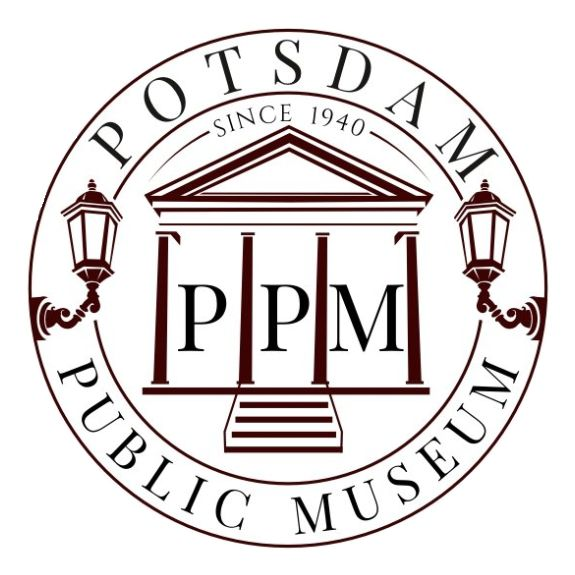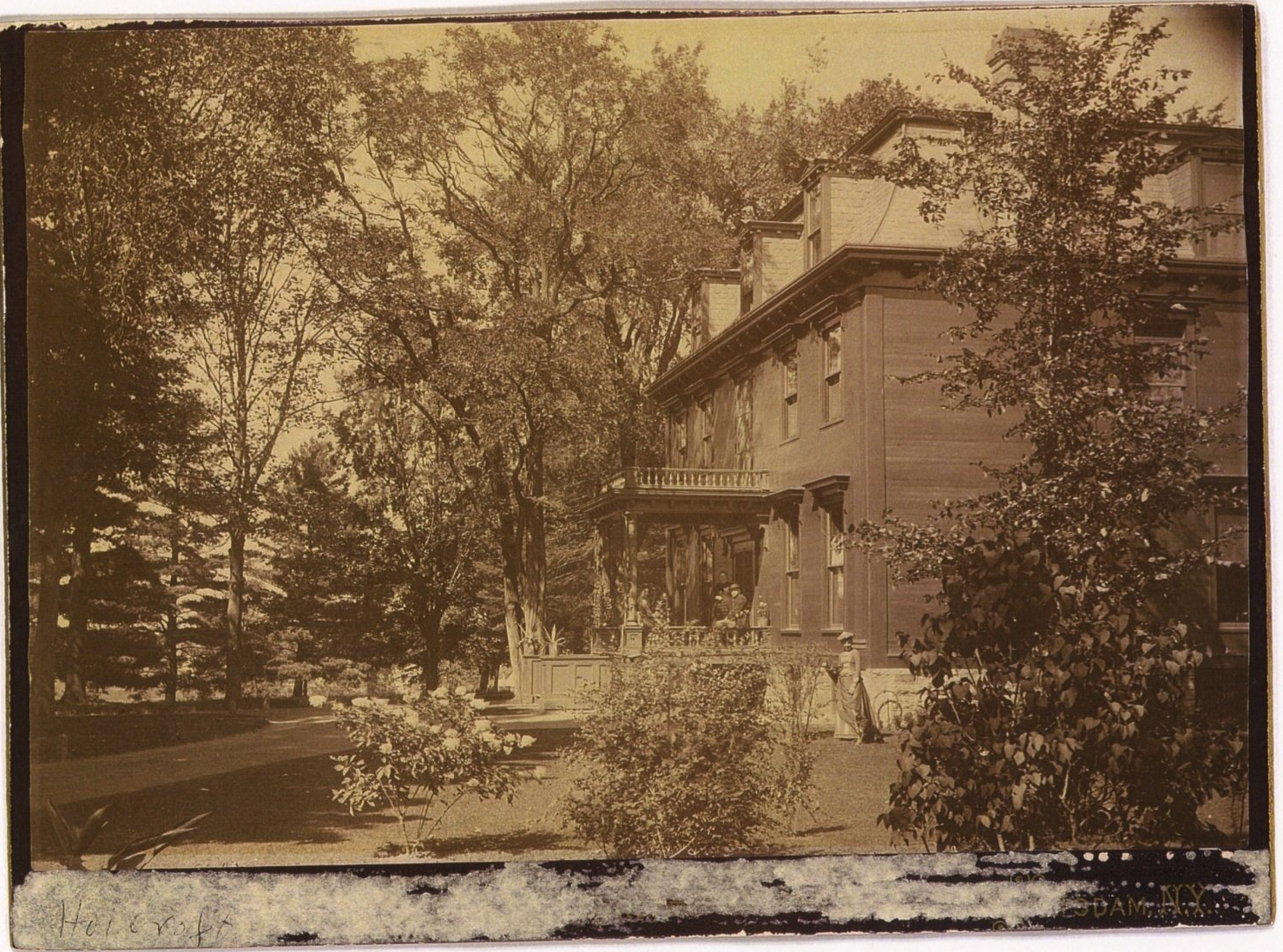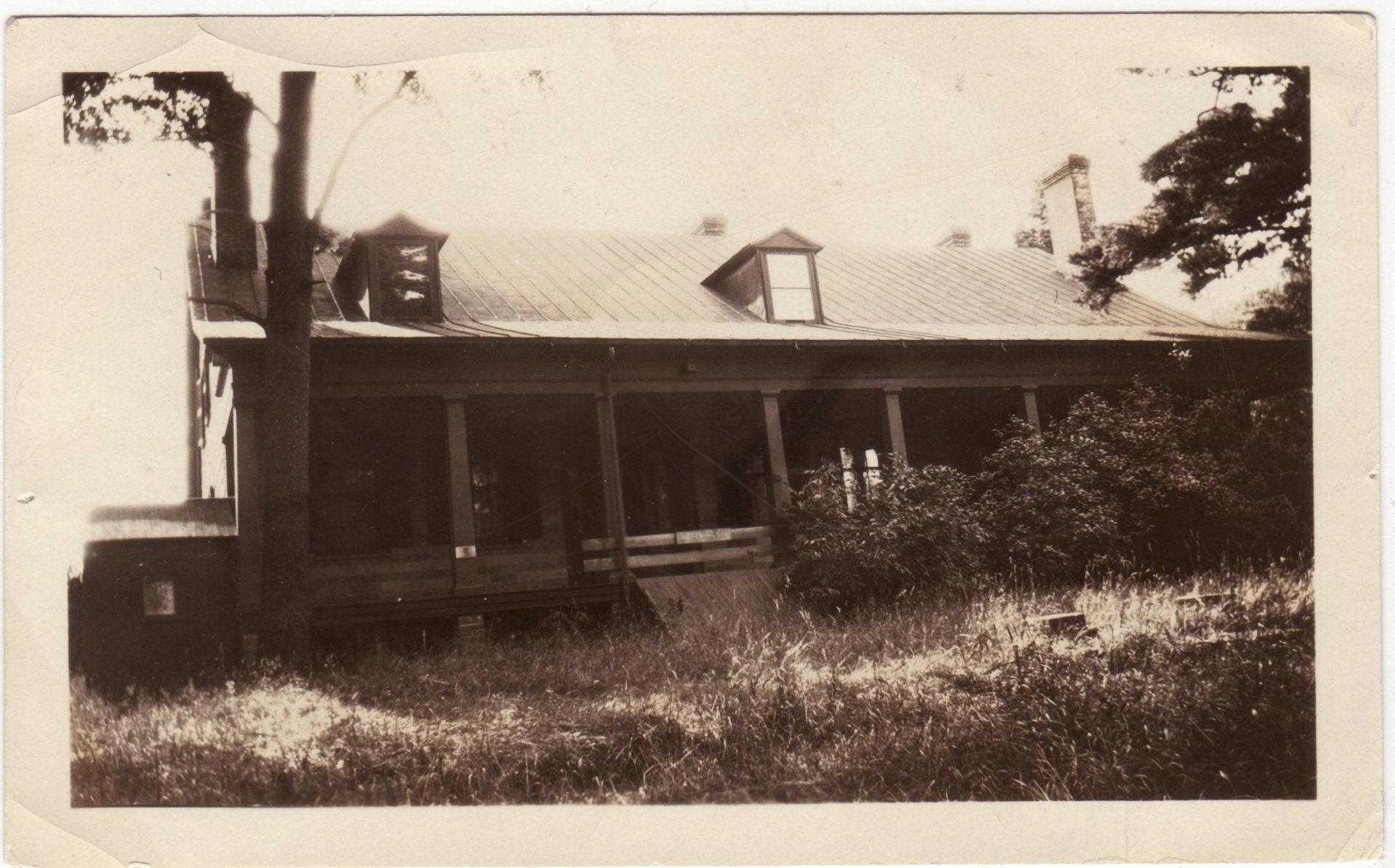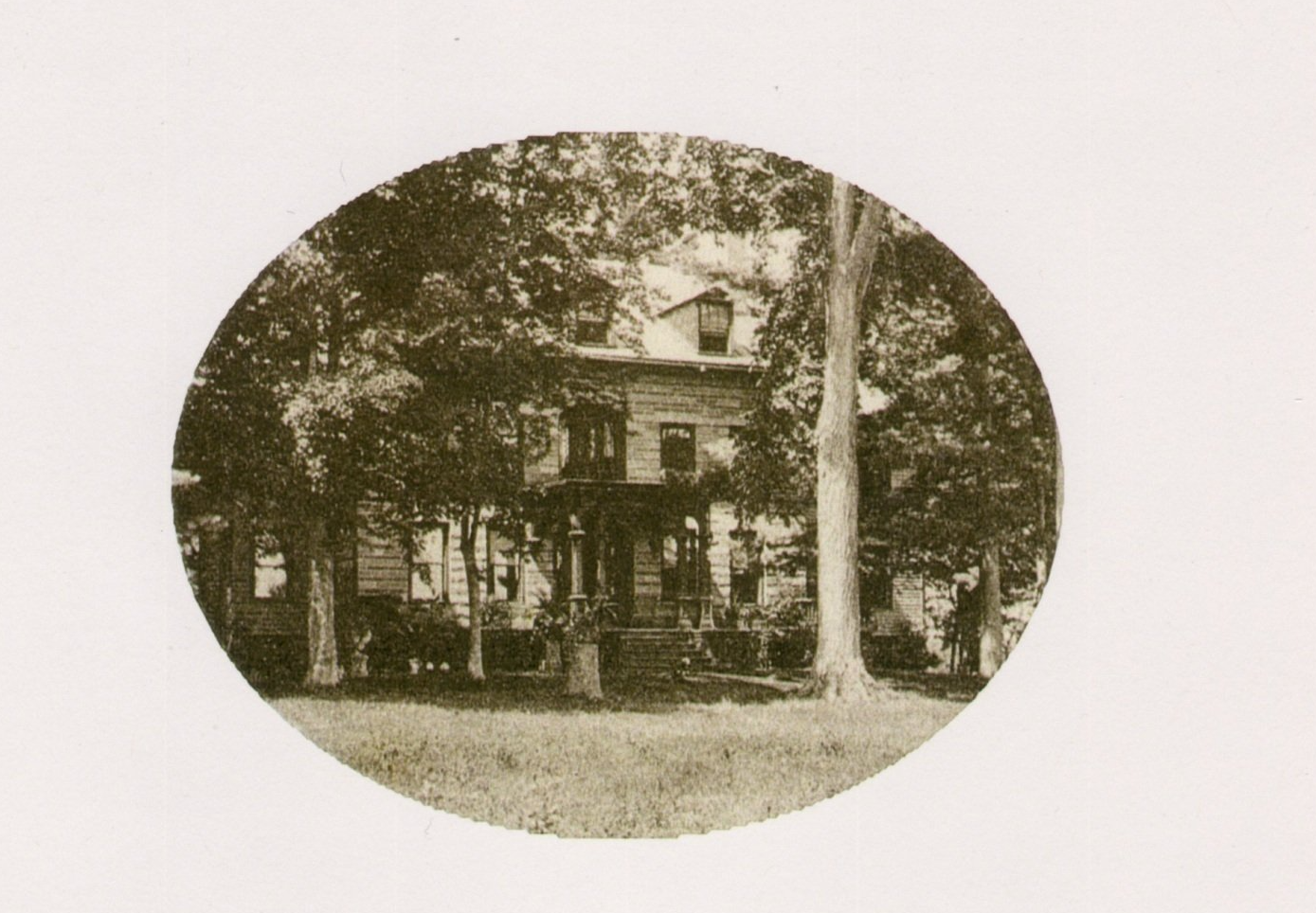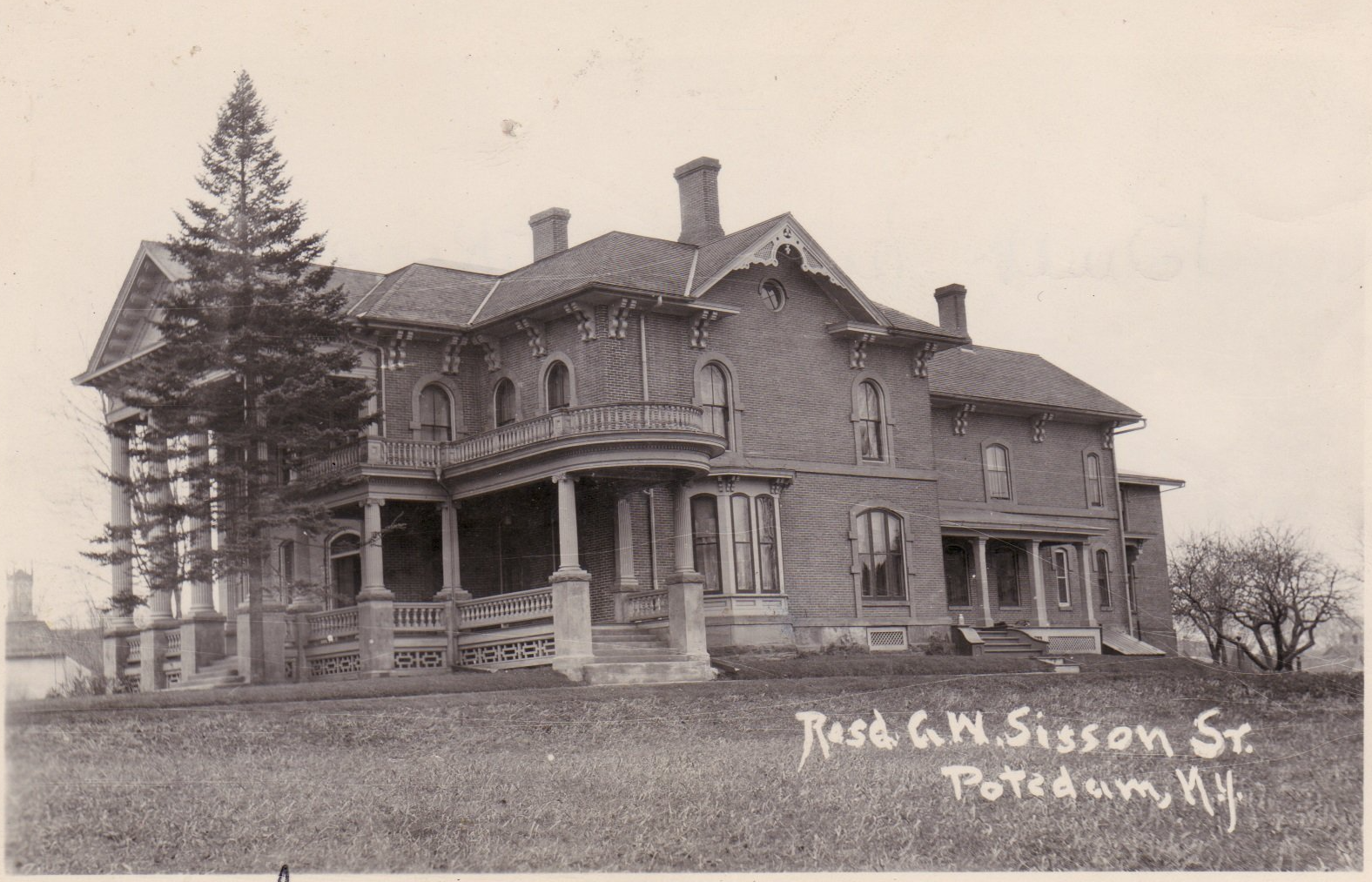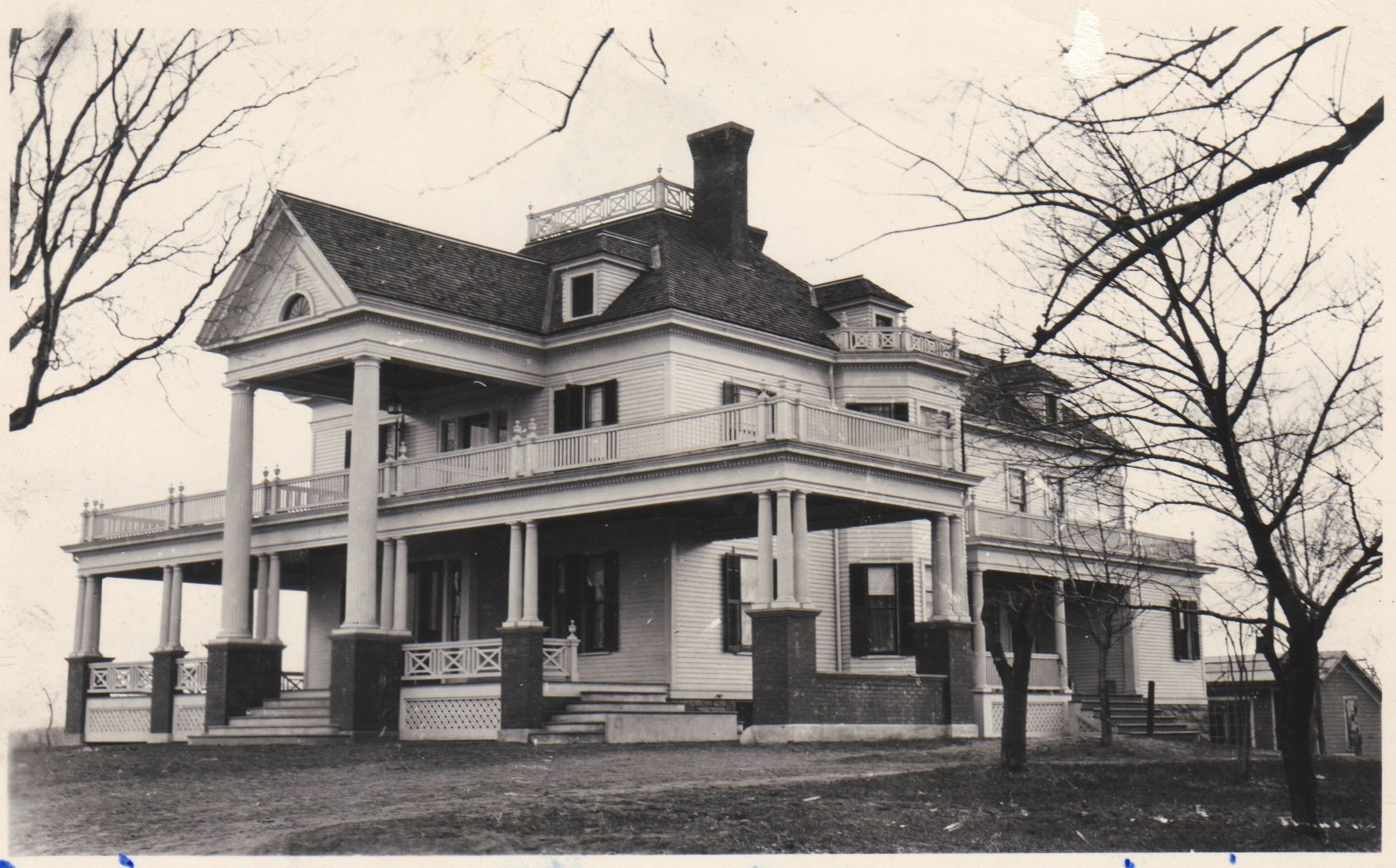THE FIRST CLARKSONS
THE FIRST CLARKSONS COME TO POTSDAM
In 1818, John C. Clarkson came to Potsdam as an attorney for the Proprietors to succeed Benjamin Raymond who had resigned as Land Agent and had moved to Raymondville. In September 1819, he wrote Garret Van Horne, “The emigration to this country from the eastward is less than last year.” In 1820, Mr. Clarkson wrote Mr. Van Horne, “We have sold but little land this year. Our village however is improving. Several houses are now going up and it is proposed to build a Presbyterian Church on the public square this season if a sum can be raised by subscription sufficient to defray the expense. The Academy (Union Street) has hitherto answered for our religious meetings. It is now a great deal too small. Numbers are prevented from attending worship for want of seats.”
In 1818, John C. Clarkson built a house at 44 Elm Street, which was later remodeled extensively by George Bonney. It burned down in 1962, and the property was purchased by the Presbyterian Church. It is now the site of the church’s Fellowship Hall.
In 1822, John Clarkson built the Mansion House on the Clarkson Hill, known as Holcroft, and lived there until 1835 when he returned to New York. In 1852, T. Streatfield Clarkson came from New York and took over Holcroft. He was married to Ann Mary Clarkson (sister of Thomas S. Clarkson and the three Clarkson ladies who founded the college). Their daughters were Annie Clarkson and Emily Clarkson Moore, who gave the Clarkson Hill property to Clarkson College.
In the summer of 1827, Augustus Lavinus Clarkson came to Potsdam and built “Woodstock” that same year.
Thomas S. Clarkson, whose wife was Elizabeth Clarkson (a first cousin), came in 1840 and built “The Homestead” which burned in 1909. (Pictures in frame in Museum).
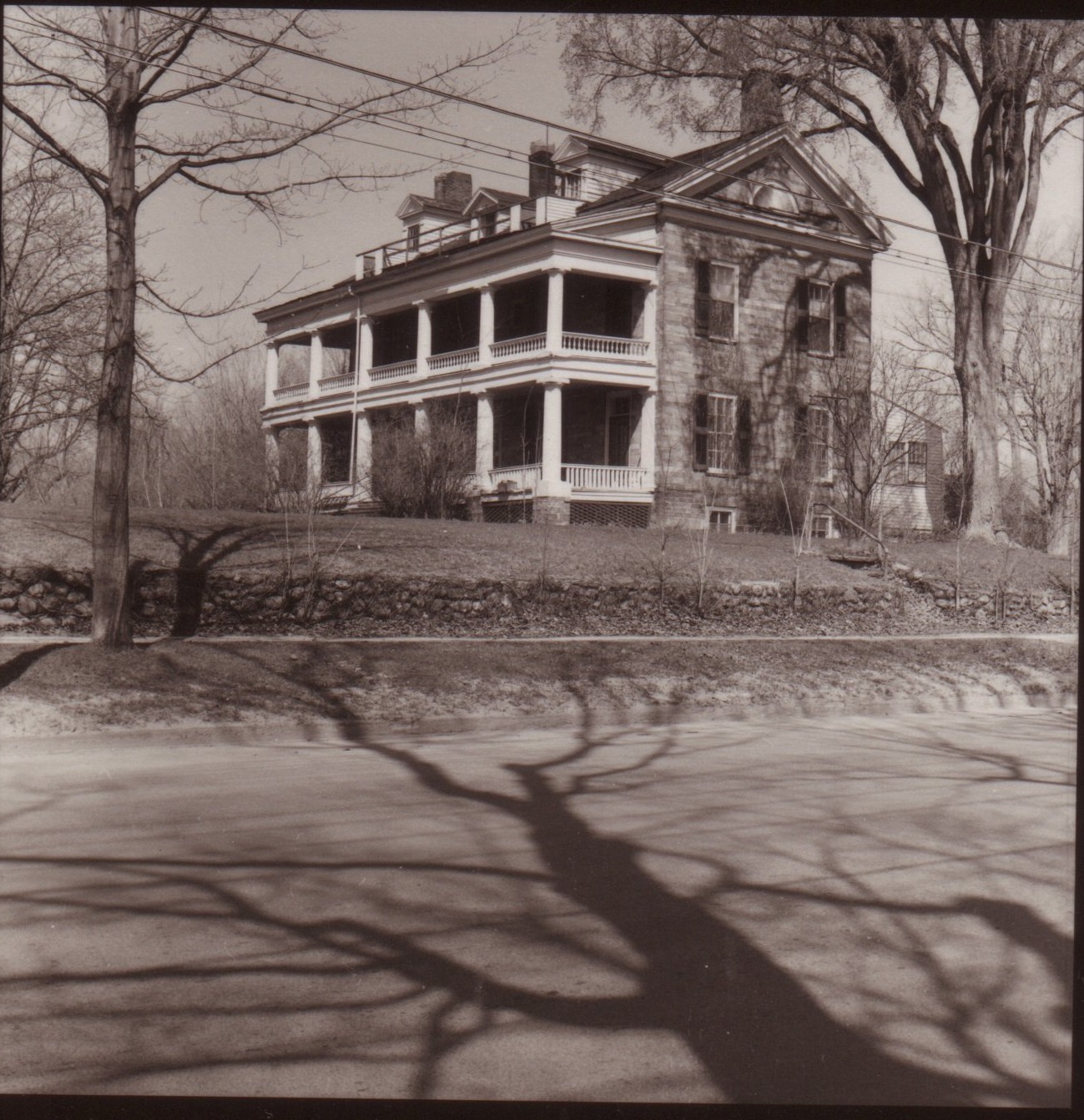
David L. Clarkson bought his property from Mr. Hermon LeRoy. The house stood where the Merritt Apartments now are. The house was of white wood, built on three sides of a square with a garden in the center. The first Episcopal clergyman, Rev. Mr. Bury, lived in the LeRoy home after Mr. LeRoy returned to New York. The house burned and David Clarkson built his new home of sandstone about 1836. The fieldstone house located on Castle Drive was the caretaker’s house, built in 1830, and was occupied by Mr. Clarkson while his new home was being constructed. A lane led from the house to Elm Street and the gate was near the Baptist Church. Tradition has it that David Clarkson did not get on well with the other members of the family in Potsdam and returned to New York where he later became president of the New York Stock Exchange.
PROMINENT HOMES
PROMINENT MEN AND THEIR HOMES
In 1810, Benjamin Raymond built his home on his 508 acre farm which was that part of Potsdam lying east of Market Street and north of Elm Street. The house was a one-story white wooden structure, U-shaped, the main part 64’ x 16’ with two wings to the south, each 17’ x 19’. A garden filled the open space between the wings. In 1818, when Mr. Raymond resigned as land-agent and moved to Raymondville, he sold his farm back to the Clarkson Proprietors. John C. Clarkson, who came to Potsdam at that time to take over Mr. Raymond’s duties, lived in the house while he was building his own on Elm Street. The house was then sold to Hermon LeRoy, one of the Proprietors (hence Leroy Street) and then to David L. Clarkson. This house burned and David L. Clarkson built the stone house about 1836 (at present the Merritt Apt.).

In 1811, Liberty Knowles, who married Melinda Raymond, built the first two-story house in Potsdam. It was a beautiful colonial type house on Market Street opposite Depot Street and was last owned by Mr. Ives. It was torn down to build the present Kaplan Block.

In 1821, Sewall Raymond and Liberty Knowles built the store at the corner of Market and Elm Streets of Potsdam sandstone, in the old slab and binder type of stonework. This was an experiment to decide whether it was practical stone for building purposes.

In 1823, John M. Call built the first residence of Potsdam sandstone. This is the present Elks Club. Mr. Call was the grandfather of Harriet Call Burnap, who with her husband gave the Potsdam Museum its collection of English Pottery, and of Helen Call who also sent many items to the Museum including her collection of early pewter. The house was purchased by Bloomfield Usher in 1854 and it became the Potsdam Club in 1895. In 1960, the building was sold to the Potsdam Elks Club.
The “Moon” house at 29 Pierrepont Avenue was built in 1825 by John Smith who came to Potsdam in 1816. It was the first house “to be raised in Potsdam without liquor”. A tannery belonging to him stood just north of the house. John Smith had two sons, Truman and Justus, who opened the first bookstore. They sold to Mr. Seeley who sold to J.R. Weston. Weston’s Bookstore was given by Murray Walker to Clarkson College in 1963.
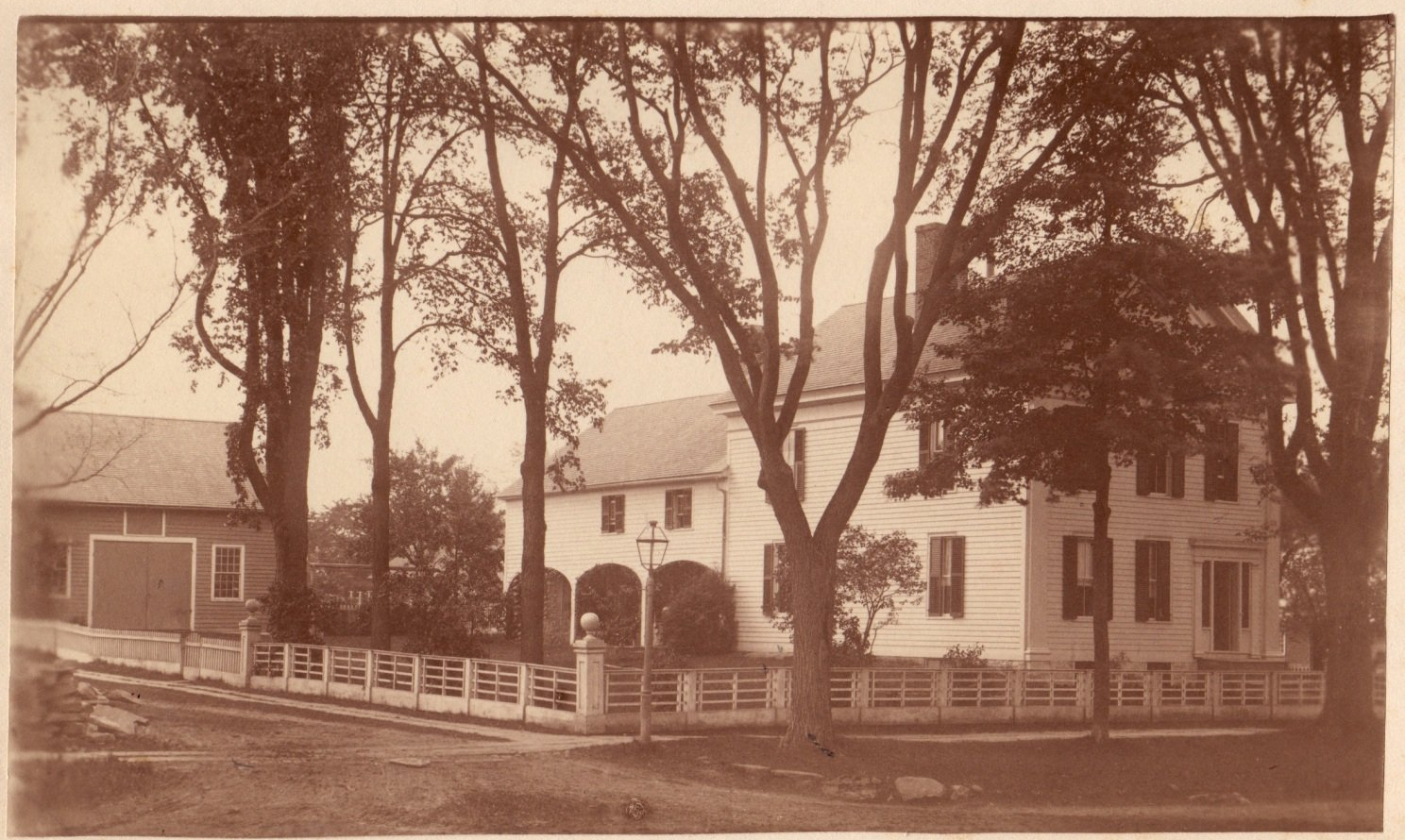
Sewell Raymond, a cousin of Benjamin Raymond, built his white frame house in Greek Revival style in 1813. It stood at the corner of Elm and Union Streets until 1937 when it was moved back to Union Street and the Shell Gas Station was built. Today the Raymond house contains apartments.
The house at 35 Main Street where Harley Sackett lives was the Methodist parsonage in 1836. The Lenney house, 29 Bay Street, was built by Mr. Tambling and later purchased by the Presbyterian Church for a parsonage. It was occupied by the Rev. Mr. Hotchkiss and Dr. E.W. Plumb. Triangle Fraternity occupies this house today.
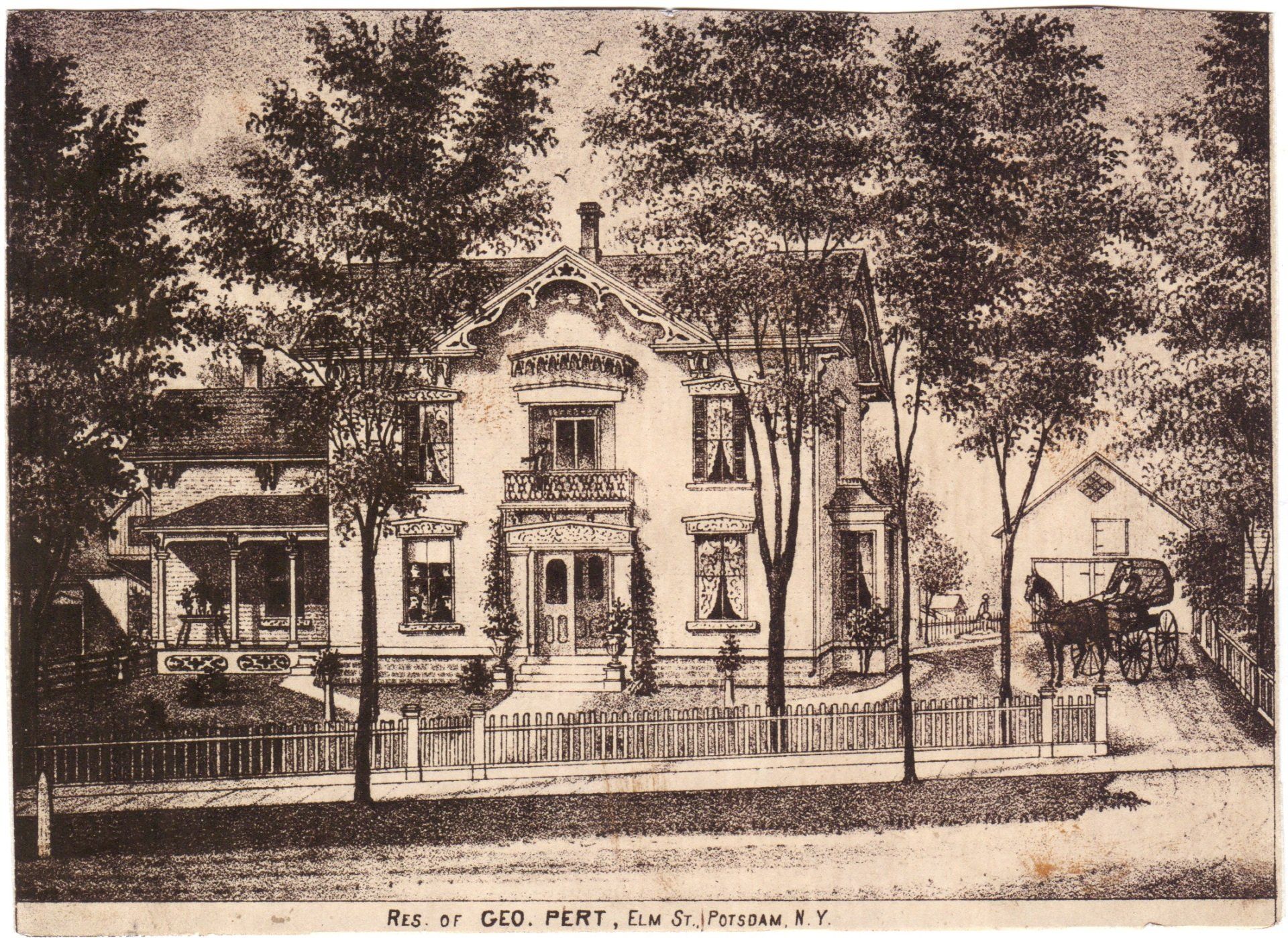
The Pert House, 16 Elm Street, now home and office of R. E.S. Prescott, was built in 1863 by George Pert. It is constructed of brick, in the Italianate style.
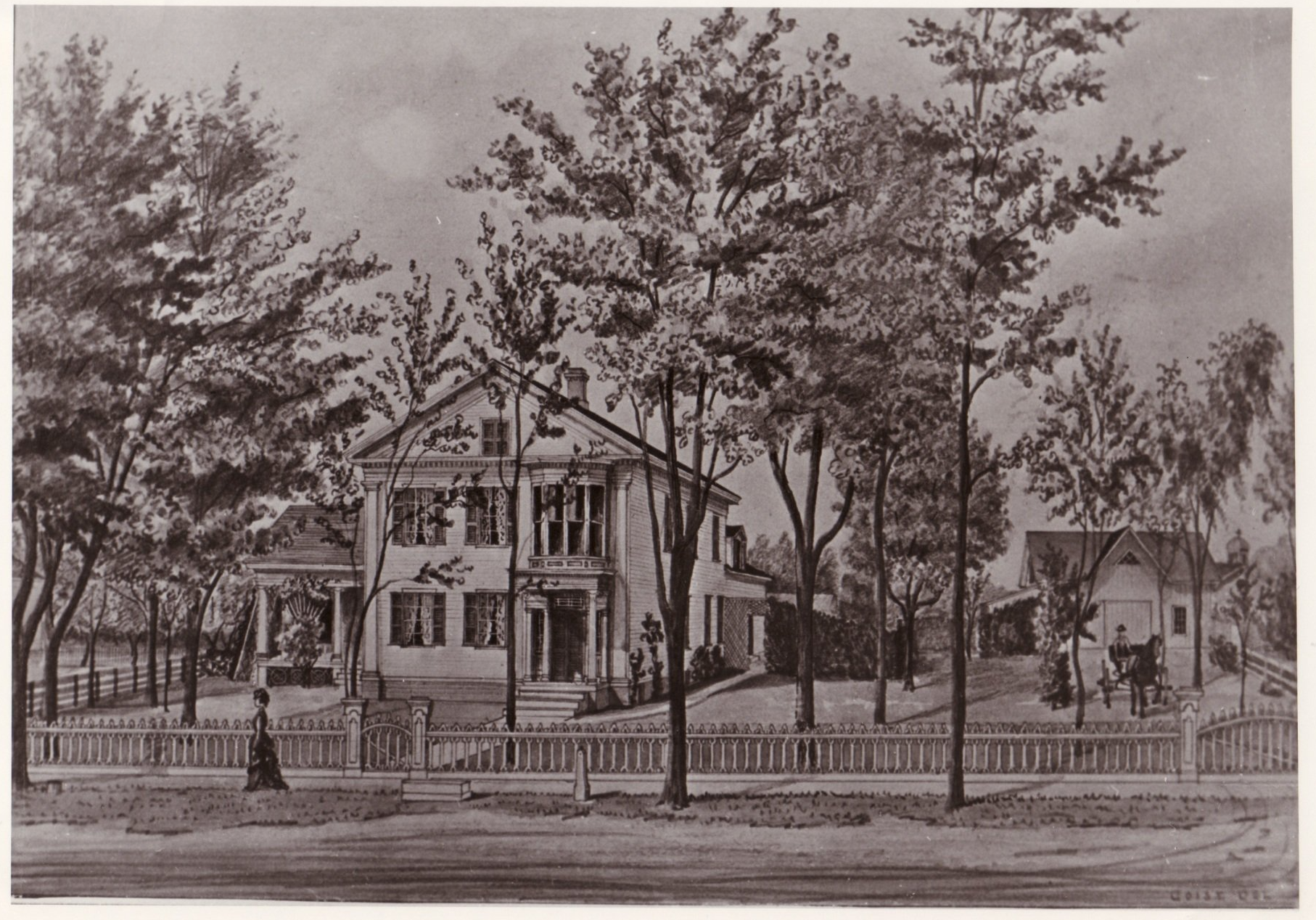
Judge Henry Knowles, eldest son of Liberty Knowles, one of Potsdam’s first settlers, built his Greek Revival frame house at 48 Elm Street in 1842. Judge Knowles was St. Lawrence County judge and a noted attorney. Dr. Helen Hosmer resided in this home until her death.
The three Sisson homes are now fraternity houses. George Wing Sisson founded the Racquette River Paper Company in the 1890s and had much lumbering interests. The paper company was sold to Nekoosa-Edwards Paper Company in the 1950s. The Sisson Farm on outer Sisson Street was built in the 1890s by George W. Sisson, Jr. The house at 14 Leroy was built in 1864 by Henry Watkins and when George W. Sisson, Sr. purchased it in 1903, he remodeled it and added the portico. The house at 53 Elm Street was built in the 1890s by Rufus L. Sisson, son of George Wing, Sr., and was later home of Walter Sisson.
There are several Gothic Revival homes in Potsdam including the one at 46 Elm Street, built by E.W. Foster in 1852.
